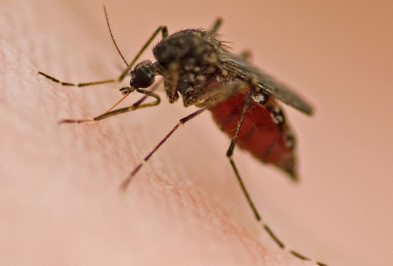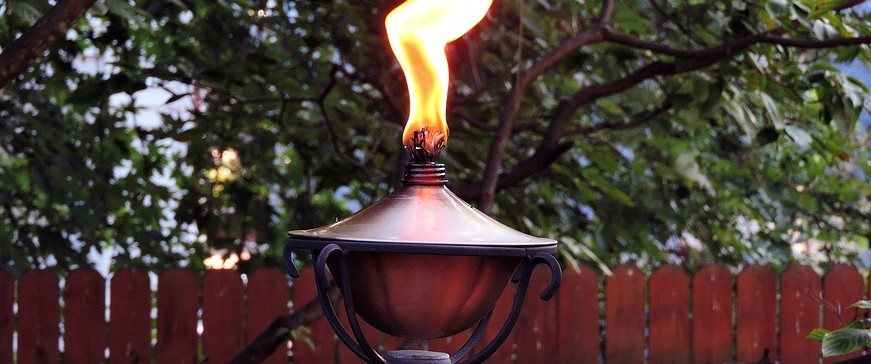MOSQUITOES IN WISCONSIN
Mosquitoes are common pests that can irritate due to their itchy stings. While most mosquito bites are annoying, some can carry dangerous diseases, making them a severe health risk. Identifying mosquitoes and understanding their behavior can help prevent infestations and reduce exposure to these pesky insects.
In Wisconsin, mosquitoes are most active during warmer months, especially in areas with abundant water sources. Different species of mosquitoes live here, including the common Culex mosquito, Aedes aegypti (known for spreading diseases), and the Asian tiger mosquito (Aedes albopictus), known for its aggressive biting behavior during the daytime.
WHAT DO MOSQUITOES LOOK LIKE?
Mosquitoes belong to the family Culicidae and are part of the Diptera order, making them true flies. They have slender bodies with distinct abdomen, wings, six legs, and long, thin antennae. Adult mosquitoes range in size from 1/8 to 3/8 inches and have two noticeable body parts: the thorax and abdomen. Female mosquitoes have an elongated proboscis, which they use to feed on blood. The blood is used to supplement a female mosquito’s diet with essential proteins and iron, which she uses, along with carbohydrates derived from plant nectar, to assist in developing her eggs.
Male mosquitoes also have a proboscis, but they primarily use it to feed on nectar rather than blood. One way to distinguish male mosquitoes from females is by their bushy antennae, while females have smoother antennae.
SIGNS OF A MOSQUITO INFESTATION
Signs of a mosquito infestation can often be subtle but become more noticeable as their numbers grow. One of the clearest indicators is frequent bites. Mosquitoes are likely breeding close by if you’re experiencing multiple bites, particularly when spending time in your yard or near stagnant water. These biting pests multiply quickly in areas with water sources, making it essential to be aware of your surroundings.
Another sign to watch for is the presence of mosquito larvae in standing water. Mosquitoes lay their eggs in water, and these eggs hatch into larvae, commonly referred to as “wigglers.” You might notice these larvae wriggling in still water, such as bird baths, ponds, clogged gutters, or small tree holes. These breeding sites are essential for mosquito development, and spotting larvae indicates that mosquitoes are establishing themselves nearby.
Lastly, swarming adult mosquitoes are a telltale sign of an infestation. Mosquitoes tend to gather around water sources or in shaded, humid areas. If you notice swarms of mosquitoes in your yard, especially near pools of water, they’ve likely found an ideal environment to breed and multiply.
HABITAT, DIET, LIFE CYCLE & BEHAVIORS
WHERE DO MOSQUITOES LIVE?
Mosquitoes are typically a problem if you have standing water on your property. They breed on or near water and only need a small amount of water to lay eggs. Areas where you will likely find mosquito activity include bird baths, decorative ponds, buckets, tires, rain gutters, and even children’s swimming pools.
DIET
Male and female mosquitoes feed on nectar from plants. However, only female mosquitoes need a blood meal to produce eggs. Female mosquitoes use their sharp proboscis to pierce the skin and draw blood from their hosts. They are attracted to the carbon dioxide humans and animals exhale, body heat, and sweat. Male mosquitoes, on the other hand, feed exclusively on nectar and plant juices.
LIFE CYCLE
The mosquito life cycle consists of four stages: egg, larva, pupa, and adult. Under favorable conditions, such as warm temperatures and access to water, this entire process can take as little as a week. It all begins when female mosquitoes lay eggs in or near water. Some species, like Aedes aegypti, have eggs that can survive dry periods for months, only hatching once water becomes available.
After hatching, the eggs develop into larvae, often called “wigglers,” which live in water and feed on organic matter and bacteria. Following the larval stage, mosquitoes enter the pupal resting phase. During this time, the pupae, or “tumblers,” float on the water’s surface as they prepare for adulthood.
Finally, adult mosquitoes emerge from the pupae, ready to fly, and immediately seek food. Female mosquitoes, in particular, will search for a blood meal to support egg production and restart the life cycle.
BEHAVIORS
Female mosquitoes are the ones responsible for biting humans and animals. They usually feed during the early morning and evening hours but may bite throughout the day, depending on the species. For example, the Asian tiger mosquito is known for being aggressive and biting during daylight hours. Mosquitoes are attracted to:
- Carbon dioxide: Released when humans and animals breathe.
- Body heat and sweat: This helps mosquitoes locate their hosts.
Mosquitoes are also known for their ability to adapt to various environments. Some species, such as Culex, prefer urban areas, while others, like Anopheles, are more commonly found in rural or wooded regions.
ARE MOSQUITOES DANGEROUS?
Yes, mosquitoes can be dangerous. Some species are vectors for serious diseases affecting both humans and animals. Female mosquitoes are the primary carriers of these illnesses, spreading when they bite to draw blood. Diseases mosquitoes carry include:
- West Nile virus: Spread primarily by Culex mosquitoes, it can cause flu-like symptoms and, in severe cases, neurological damage.
- Zika virus: Spread by Aedes aegypti mosquitoes, this virus can cause birth defects if contracted during pregnancy.
- Malaria: Spread by Anopheles mosquitoes, malaria is a life-threatening disease in tropical regions.
- Dengue fever: Aedes mosquitoes are responsible for transmitting this painful, flu-like illness.
- Yellow fever: Another disease Aedes aegypti spreads, yellow fever can lead to severe liver damage and jaundice.
- Encephalitis: Several mosquito species, including eastern equine encephalitis, can transmit viruses that cause brain inflammation.
- Heartworm: Gambusia fish and other animals can be affected by heartworm, a dangerous parasite spread by mosquitoes.
While mosquito-borne diseases like malaria and dengue are more common in tropical climates, some, like West Nile virus, are also found in Wisconsin.
Domesticated dogs may also be exposed to heartworm by mosquitoes.
HOW TO GET RID OF MOSQUITOES
Reducing the mosquito population on your property can be challenging, especially without the assistance of professionals. Mosquitoes are not only persistent but also skilled at finding ideal breeding sites. For the most effective solution, contacting Terminix Wil-Kil Pest Control is the best way to control mosquito infestations. Our team offers comprehensive residential and commercial mosquito control services to help manage and alleviate the mosquito problem on your property, ensuring a more comfortable and safe environment.
Successful mosquito removal involves a combination of eliminating breeding sites and employing targeted control methods.
One crucial step is removing standing water, as mosquitoes lay their eggs in water. Common places to check include clogged gutters, bird baths, plant pots, and puddles. By eliminating these water sources, you can significantly reduce the number of mosquitoes in your yard.
Additionally, mosquito traps can be useful in attracting and capturing mosquitoes, further reducing their population. Personal insect repellents, especially those containing DEET or other active ingredients, are also highly effective at preventing bites and keeping mosquitoes at bay.
MOSQUITO PREVENTION TIPS
Mosquitoes can be very difficult to prevent. Reducing areas of standing water on your property will help but may not be completely effective, and that is why you should contact Terminix Wil-Kil Pest Control at the first sign of a problem. Our mosquito control services are designed to lessen the mosquito problem on your property.
Alongside our professional services, there are several steps you can take to prevent mosquitoes from invading your space. First, regularly drain standing water from containers, flower pots, and gutters to remove potential breeding grounds. It’s also essential to ensure your home is protected by using screens on windows and doors and repairing any holes or gaps mosquitoes could use to enter.
Keeping your yard well-maintained by trimming bushes and grass can limit mosquito resting spots during the day. Since mosquitoes are weak fliers, using fans on patios or decks can help keep them away from outdoor areas where you spend time. Finally, consider planting mosquito-repellent plants such as citronella, marigold, or lavender, which are believed to deter mosquitoes naturally.
NEED HELP WITH RESIDENTIAL PEST CONTROL IN YOUR WISCONSIN HOME?
Professional pest control can make all the difference if you’re dealing with a mosquito problem in your Wisconsin home. Our pest control experts have the knowledge and tools to identify mosquito species and implement the most effective mosquito pest control methods.
Whether it’s eliminating breeding sites, applying mosquito treatments, or offering ongoing prevention solutions, our expert team of mosquito exterminators can provide peace of mind and protect your family from the dangers of mosquitoes.
FAQS
WHY DO MOSQUITO BITES ITCH?
When a mosquito bites, it pierces the skin with its proboscis and injects saliva-containing proteins that help prevent blood clotting. Your immune system reacts to these foreign proteins, causing an allergic reaction that results in itching, redness, and swelling. The severity of the reaction can vary from person to person, with some experiencing only mild irritation and others dealing with more pronounced symptoms.
DO MOSQUITOES SLEEP?
Yes, mosquitoes rest, although they don’t sleep like humans do. During the day, mosquitoes seek cool, shaded areas to relax and conserve energy. They are most active at dusk and dawn when temperatures are cooler, and humidity levels are higher, which makes it easier for them to search for hosts and feed.
HOW TO PREVENT MOSQUITO BITES?
To prevent mosquito bites, you can take several steps. First, use insect repellents containing DEET, picaridin, or oil of lemon eucalyptus on exposed skin when spending time outdoors. Wear long sleeves, pants, and light-colored clothing to reduce skin exposure.
It’s also essential to avoid being outside during peak mosquito activity hours—early morning and evening.
Eliminating standing water around your home will help reduce mosquito breeding areas, and using window and door screens can prevent mosquitoes from entering your living spaces.
DO MOSQUITOES EAT PLANTS?
Yes, mosquitoes do feed on plants. Both male and female mosquitoes consume nectar and other plant juices as a primary food source. However, only female mosquitoes require blood meals to develop their eggs.
Male mosquitoes never bite and rely solely on plant nectar for sustenance. This means mosquitoes contribute, in a small way, to pollination while feeding on nectar from flowers and plants.
Related Post From Our Blog
Bite- and Sting-Free Celebrations
For many of us, the outdoors has become an escape from day-to-day life as we try to find a new normal with COVID-19. Warm weather combined with the need for social distancing also means that [...]
West Nile Mosquitoes in Milwaukee
If you live in or near Milwaukee and you’re spending time outdoors this summer, then listen up! City officials in Milwaukee, WI have recently announced that a sample of mosquitoes from the area have tested [...]
How Much Does Mosquito Control Cost?
Once mosquitoes start buzzing and biting, people will do anything to try and keep this annoying pest at bay. Anyone knows you need to be prepared to keep pests away to enjoy grilling out, bonfires, [...]
MOSQUITO FACTS AND IDENTIFICATION in Sun Prairie, WI
Terminix Wil-Kil Pest Control is a local Pest Control and Extermination company helping homeowners and businesses with pest issues across WI.




